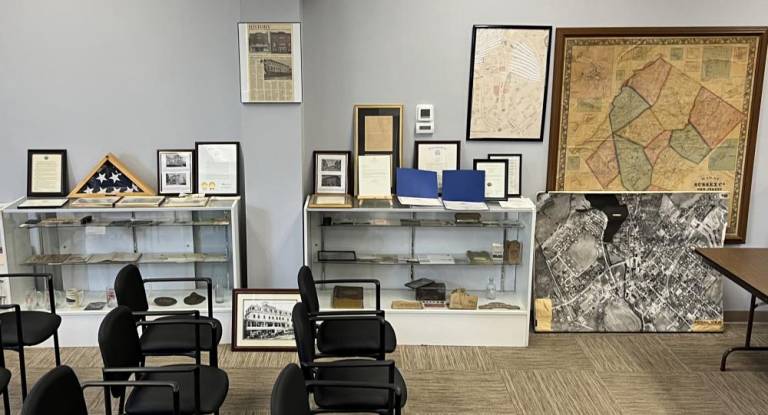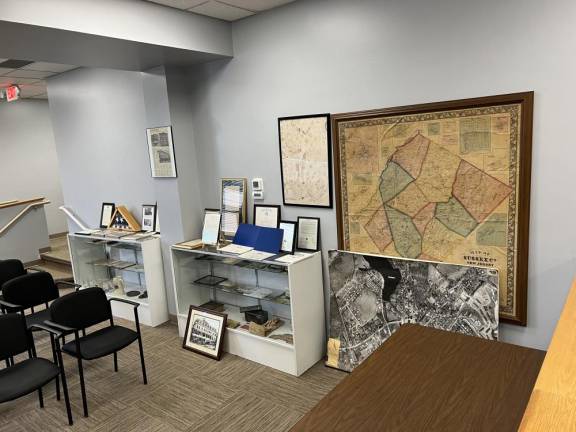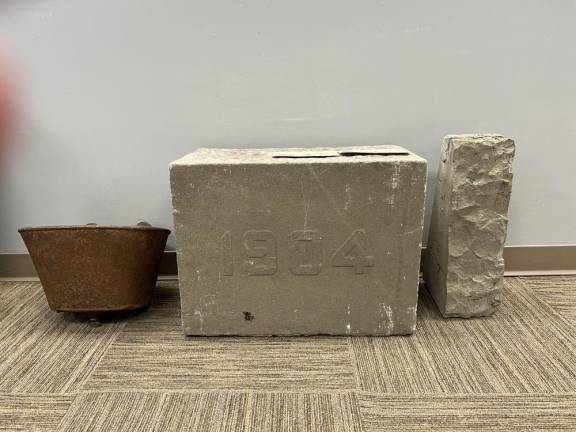


This week we will investigate the Sussex-Wantage Historical Society (SWHS).
As we did with Stillwater and historian Andy Martin, I will introduce my friend Mario Poggi, who is an avid historian, always willing to pitch in on historical matters. He is a frequent participant at history events in Sussex County.
As one moves northwest in our county, perhaps taking Route 23, the natural beauty of the Wallkill River Valley shows its verdant life.
There’s a lot of green in the summer, with grassy lowlands along the river areas, farmer fields sprouting with corn and bounded by stone walls, and wooded hills not far away.
Leaving Hamburg, there are wetlands, where the lovely sound of spring peepers is a yearly spring occurrence, and a broad stretch that leads to Wantage.
Nestled within the township is Sussex Borough.
I love the town, a square mile or so, retaining the beauty of a bygone era.
A century or so ago, Sussex (previously known as Deckertown) was a leading milk producer and a station stop for two crossing railroads. The many area farmers would drive their wagons or sleighs by horse to deliver their milk cans to the creamery.
In 2015, Mario Poggi, a newly appointed Sussex Borough councilman, also was appointed by the mayor and council as the official Sussex Borough historian.
His passion was immediately pointed to the thing that really sets Sussex Borough apart from the other towns in Sussex County: its three drinking fountains.
The one in the center of town, in Fountain Square, is iconic and it has greeted both travelers and locals since 1902. It was donated by John S. Martin and was given much fanfare by the then-mayor and council with an elaborate and beautifully written resolution in Martin’s honor.
There were the other two. One was located where the old NYS&W railroad station was on Walnut and Munson in 1905, and the other where the old L&NE railroad station was on Walling Avenue in 1906.
Both donated by the same man, T.J. Dunn, with much less fanfare, and both are currently missing the iconic marble columns.
The one on Walling Avenue had to be moved in 2009, when the local car dealership expanded and has been sitting in pieces in the borough’s Department of Public Works garage.
Dunn also donated the steeple clock in the First Baptist Church and its pipe organ.
Poggi now had a mission: To find the missing columns and to bring the Dunn fountain back out into the borough.
He created the Sussex-Wantage Historical Society that same year of 2015.
Poggi started the nonprofit, using his own funds, for the purpose of having the area’s history represented, taught and, where possible, preserved.
One of the society’s most notable preservation efforts was during the Route 23 redirection project. Part of the plan was to remove the famous “steps to nowhere,” which was a stagecoach stop in front of 25 Hamburg Ave. Also to be removed was the last remaining original bluestone sidewalk in the borough, which had become uneven and a tripping hazard, in front of the same residence.
Poggi met with officials of the state Department of Transportation and representatives of the state Historic Commission. It was decided that the stagecoach stop would stay, and the bluestone sidewalk was reset and left in place.
The SWHS also played a part in turning an unused borough property into the T.J. Dunn Community Park, honoring the borough’s benefactor, where the dismantled fountain will be moved.
The search for the missing columns continues.
The SWHS does not have a museum but does maintain a presence in the Sussex Borough Hall, 2 Main St. There are two display cases that have some interesting artifacts, proclamations honoring the 100th anniversary of the Crescent Theatre as well as the original 1904 cornerstone from the Sussex Public School along with a keystone from the school and the time capsule and contents that were inside the cornerstone.
You can visit during normal business hours of 9 a.m. to 5 p.m. weekdays.
Poggi has five binders of documents and pictures that he takes to area events, such as Sussex Day, Wantage Day and Sussex County History Day, where he sets up the SWHS table.
You can reach the SWHS online at swhistoric.org or by email at swhistoric@gmail.com
Bill Truran, Sussex County Historian